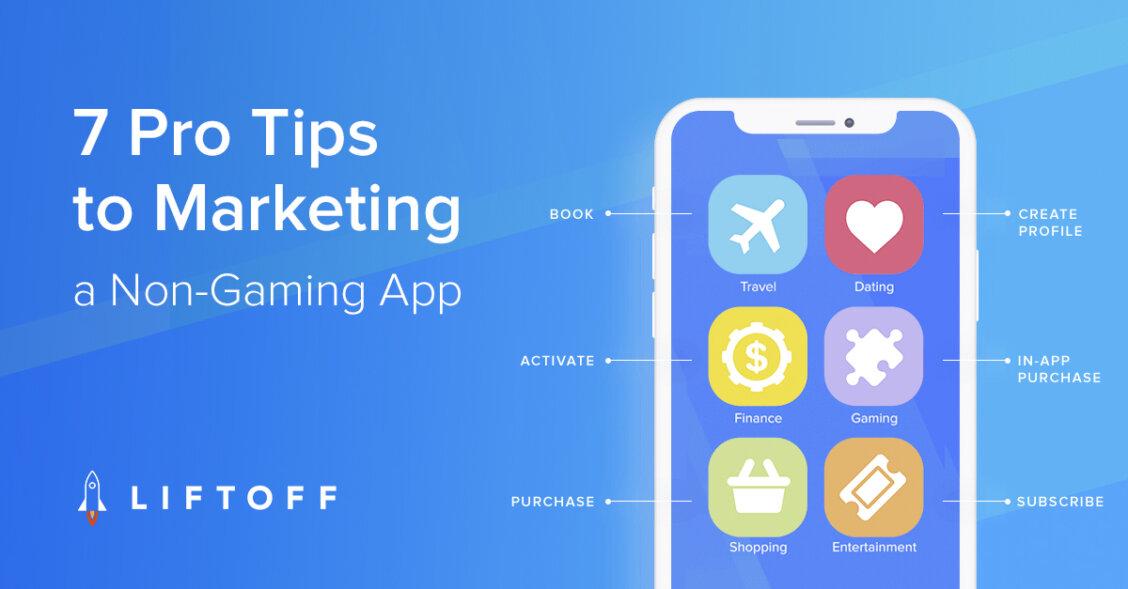
7 Insider Tips to Marketing Your Non-Gaming App Like a Pro
Successfully marketing an app is a challenge. Marketing a non-gaming app is an even bigger challenge. From identifying your target audience, educating them on the benefits of your product, and converting them into a paying customer, marketers deal with a range of challenges unique to marketing non-gaming apps.
To find out what non-gaming app marketers need to do to successfully grow their app, we asked our Mobile Heroes to share one piece of advice. Here is what they had to say:
1. Focus on Retention
Bringing a user into your app isn’t the hardest part – you then have to engage and retain them to drive value. I recommend understanding what your CRM team is doing to boost user value through unpaid means such as optimizing push notifications and emails. If it makes sense for your business model, you may want to create custom offers to drive greater activity from current users and bring back lapsed users through re-engagement.
–James Peng, Head of Performance Marketing
2. Diversify Your User Acquisition Efforts
As a marketer, I don’t think you ever want all your eggs in one basket. You become dependent on that channel and your entire paid growth trajectory is based on the pricing of that channel. What if it gets more expensive in 3 months? Can you sustain growth? It’s always good to diversify.
3. Be Concise With Your Ad Creative
The best performing ad creative uses short, concise copy that clearly the defines the benefit of what you sell. I have also found that focusing on one unique selling point per ad improves post-install engagement. Even if your product or service has several compelling selling points, it’s too distracting to list each one in a single ad.
–Elyse Burack, Head of Integrated Marketing & Brand
4. Learn From Your Mistakes
When I first started in mobile, my team worked toward a cost per install target goal. I was able to hit that goal by diversifying our user base and marketing channels, but ended up wasting money on users who never ended up paying the company back. But like all mistakes, I’ve learned from this. Now the entire MileIQ growth team operates on revenue and upgrade KPIs instead of installs.
5. Leverage Your Web Traffic to Drive App Installs
RetailMeNot users get the best shopping experience on our mobile app, but a significant number of shoppers first interact with our brand on our website, both desktop and mobile. To get more people using the RetailMeNot app, we take advantage of our web traffic by giving shoppers a preview of the app experience and offering app-exclusive benefits.
We make it easy for users to download the app from our mobile website, with links to the App Store or Google Play Store on every coupon page. On the desktop site, users can enter their phone number to receive a text message with a link to install the app. Whether on desktop, tablet, or smartphone, a shopper is never more than 3 clicks away from installing the RetailMeNot app and getting the best possible shopping experience.
–Vivian Chang, Senior Director of Marketing
6. Make Revenue Your #1 KPI
Don’t forget that your job is all about driving mobile revenue. There are only one or two KPIs and metrics that should be optimized for – everything else is a distraction. Some marketers get off course and start optimizing for installs and other things that may not be aligned with the health of the business (more installs does not necessarily mean more engaged users), so my advice is to focus on what matters: Driving engaged users and revenue.
–Iryna Newman, Former Director of User Acquisition at Invoice2go
7. Work with Smart, Dependable Partners
One of the most important things I’ve learned as a mobile marketer is that my success often hinges upon the success of the partners I work with. A big part of the job is working with mobile user acquisition partners to make sure they’re delivering on their promise, that we’re setting reasonable expectations of each other, and that the line of communication is clear.
Don’t get held back by working with the wrong partners, make sure to set clear expectations for performance and communication before signing an IO.
–Chris Nguyen, Performance Marketing Manager
Want more mobile growth advice? Check out Mobile Heroes for interviews, videos, webinars, and blog posts designed to help app marketers get the most of their user acquisition and retention campaigns.